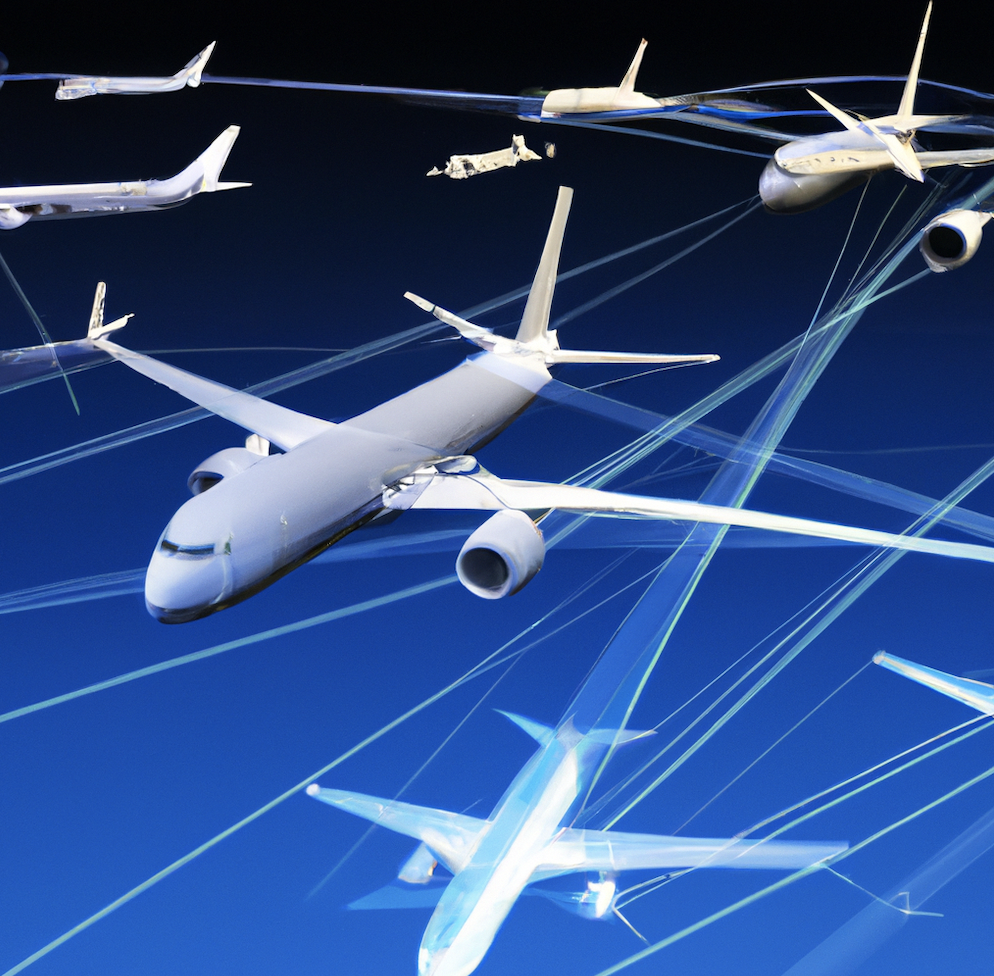
This article discusses the outdated technology that airlines often use and how companies and travelers could benefit from advancing artificial intelligence within the industry.
Legacy aviation technology has worked well for forty years but the cracks are showing. Airlines need to break away from outdated systems, implicated in several recent costly “fails.”
“How Southwest failed the holidays” screamed the CNN headline, the kind of publicity that could send any airline boss into a tailspin. In December 2022, CNN was not the only US media outlet demanding blood over a Southwest Airlines meltdown that halted operations and stranded passengers. Alongside the headlines were stories of brides missing their weddings and abandoned children. What could have been worse—except perhaps the timing? The incident even earned its own entry in Wikipedia.
Sadly, while Southwest’s cascading failures last December were arguably the highest-profile to date, they are not isolated. The last few years have witnessed an increasing number of system failures for global airlines, widespread cancellations, and criticism. In a recent incident, BA was forced to cancel 43 flights out of Heathrow shortly before the late May Bank Holiday, causing criticism and passenger anger.
In April, a report by the U.S. Government Accountability Office (GAO) placed most of the blame on factors within airlines’ control. At the heart of most of the problems is outdated IT. While legacy technology provided a solid foundation for airlines for decades (the clue is “decades”), many systems are showing their age—the “shameful open secret behind Southwest’s failure” to which the New York Times referred.
Demand for travel has started to bounce back after the pandemic but the technology has not kept up. If airlines are to keep passengers happy and avoid future fiascos that rain down bad publicity and financial costs, they need to embrace innovation and make urgent improvements.
A few major incidents lately include:
- BA’s cancellation of 43 flights, or 5% of its services out of Heathrow, on 25 May 2023. This was blamed on an IT issue. A series of incidents for the airline included dozens of long-haul cancellations in the week before Christmas 2022, and cancellations of flights in February 2023 due to technology problems.
- Southwest. From December 21–26, 2022, Storm Elliott brought severe blizzards and high winds to parts of the US. A few carriers were affected, but Southwest struggled to recover. More than 15,000 flights were cancelled and by the end of December, 87% were Southwest’s. The crisis cost the airline around $800 million.
- Lufthansa. In February 2023, thousands of passengers were stranded when an IT fault caused delays and disruptions across Germany’s flagship airline group. Baggage handling, check-ins, and dispatch were all affected. Images from several German airports showed chaos, and Lufthansa shares fell 1.5% in a few hours.
- In January 2023, the Federal Aviation Authority (FAA) shut down air traffic after a “notice to air missions” system failed—the first complete shutdown since 9/11. More than 1,300 flights were canceled and 9,500 were delayed.
The common denominator in these and less spectacular cases is technology—in Southwest’s case, its 1990s airline scheduling system that hindered its ability to track crew and pilots following Storm Elliott cancellations.
Southwest Airlines Pilots Association (SWAPA) said the December 2022 events came as “no surprise.” Shortcomings in adapting, innovating, and safeguarding operations had led to over a decade of repeated system disruptions. Southwest conceded that technology played a role. “Our technology struggled to align our resources due to the magnitude and scale of disruptions,” its spokesman said. In the FAA “fail,” the cause was a corrupted database. The FAA system involved is more than 30 years old and six years away from any update. Lufthansa said its problems were caused by damage to Deutsche Telekom’s fiber-glass cables.
Other factors, of course, can contribute: bad weather, say, post-pandemic staff shortages, or security threats. According to the UK’s Civil Aviation Authority (CAA), more than a third of all UK flights were delayed in 2022. Having serviceable technology, however, dictates how airlines mitigate unavoidable disruptions and how fast they recover.
Before founding JourneyHero, I witnessed firsthand increasing failures in existing travel systems since 2010, and the difficulties these “outages” caused my corporate employer at the time. They were also hurting passengers. Revenue Management Systems that once served the travel industry well are now unable to accurately forecast future demand based on the past and to regulate pricing accordingly, because of extreme disruptions to supply during the pandemic.
Looking beyond legacy technology, JH set out to provide airlines (and other parts of the travel industry) with reliable alternatives that better align their interests with those of customers. Many airlines have issues with their ticketing and aviation infrastructure systems that can cause travel disruption. Whereas legacy systems rely on aging infrastructure, JH technology is designed around the latest technology advances, making it less susceptible to an outage.
JourneyHero’s technology is one illustration of the sort of advanced thinking required if carriers are to keep abreast of change and meet consumer expectations. According to McKinsey, outages and cyber incidents around the world demonstrate even the biggest airlines need to upgrade their IT and operational technology systems, including architecture and underlying infrastructure to reduce risk and build resilience into their digitised operating models. Airlines themselves need to take responsibility for lack of systems maintenance and/or outdated technology—and soon. If they do not begin to invest in the fragile technology space, I believe this summer could see more operational failures that have already cost airlines dear and dented their public image.
This article was provided by travel tech entrepreneur and CEO of JourneyHero, Shane Batt.